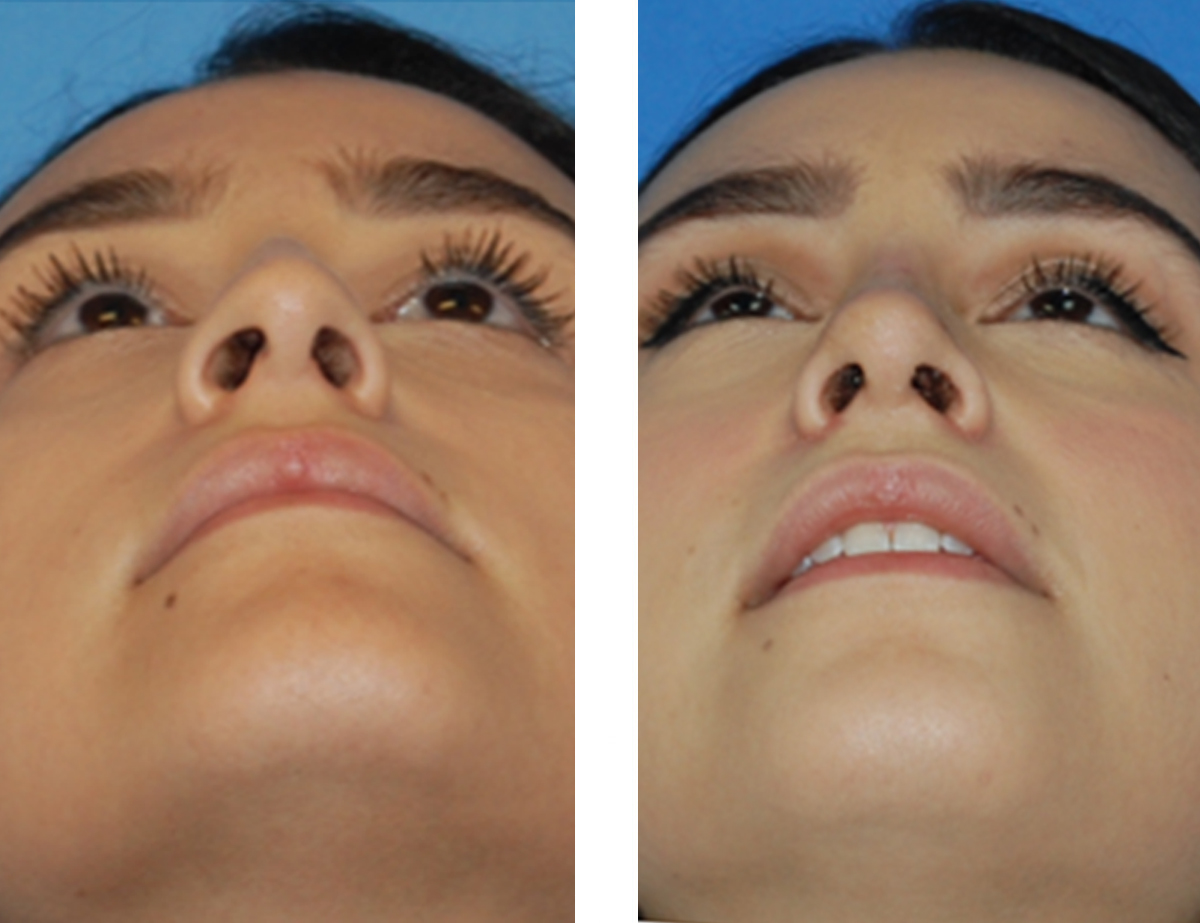Home tests for deviated septums can easily help detect one. Just block one nostril while breathing normally through the other one; if breathing through one nostril becomes noticeably harder than breathing through its counterpart, a deviated septum may be responsible.
At an official medical evaluation, your physician will use either a nasal speculum or other light instrument to examine the nasal and sinus passages.
1. Look at Your Nostrils
Though deviated septums are typically diagnosed by medical professionals, like your primary care doctor or an ENT specialist, you can conduct several self-tests yourself to see if this nasal condition could be contributing to your symptoms. While these tests won’t give a definitive answer, they can help determine whether it may be time to see healthcare provider for further evaluation.
Start by clearing away any mucus from your nose and mouth before closing off one nostril with a finger or cloth. Breathe through the other nostril for two minutes while paying attention to how easy or difficult breathing feels; any resistance could be an indication of deviated septum; other indicators might include frequent sinus infections, unexplained nosebleeds, facial or oral pain or loud breathing while sleeping – these could all indicate it is time for an appointment with an ENT specialist.
2. Breathe Through One Nostril
Deviated septum is the displacement of cartilage that separates the nostrils, with some estimates placing as many as 80% of people having some degree of deviated nasal septum. Mild deviation may present no symptoms and do not necessitate medical care unless health complications or quality-of-life impacts arise from it.
To identify whether you have a displaced septum, take a close look at the underside of your nose in a mirror or camera and block one nostril with your finger as you breathe through that side – pay attention to whether one side feels harder or easier for you and take note if breathing through either side is restricted; this could indicate that a septum has moved.
To diagnose a deviated septum, the best method is to visit a healthcare provider for a physical exam. Your healthcare provider will ask about past injuries or symptoms that you’ve had and use an otoscope or nasal speculum tool for examination of both ears and nostrils.
3. Cover One Nostril
The septum is the thin strip of bone and cartilage that separates your nose’s right and left passages, and should ideally sit exactly in the middle. Shifted or crooked septa can lead to breathing issues.
Deviated septums can alter the shape of your nose, causing it to look crooked. If this is part of your symptoms, speaking to an ear, nose and throat doctor might help determine what options may be available to you.
Your ENT doctor will assess your symptoms to assess a deviated septum and may suggest septoplasty surgery as a remedy to correct its deviation, improving breathing by eliminating symptoms such as snoring and congestion. Devices like nasal strips and nose dilators may help ease discomfort while you wait; your surgeon may advise against medications which worsen breathing as well.
4. Breathe Through the Other Nostril
The septum is a thin wall of tissue that separates the nostrils. Normally, this wall runs parallel with one nostril and provides equal airflow from both nostrils. But sometimes its cartilage becomes deviated or shifts out of position causing breathing issues like snoring and sleep apnea.
At home, you can conduct an easy test to identify deviated septum. Place an index finger over one nostril to close it off before breathing through the other nostril. Do this repeatedly until breathing becomes easy or difficult through each nostril and make note of how comfortable or difficult breathing through each one is.
Symptoms of deviated septum can be assessed at Houston ENT & Allergy Services by our expert ear, nose and throat doctors. A physical exam of your nasal and sinus passages may include use of handheld tools known as nasal speculums to open your nostrils gently or use of lighted scope (nasal endoscopy) to examine them more closely.
Disclaimer: The content on this blog is intended for general informational purposes only. It is not a substitute for professional medical advice, diagnosis, or treatment. Always consult qualified healthcare providers for personalized advice. Information regarding plastic surgery, dental treatment, hair transplant, and other medical procedures is educational and not a guarantee of results. We do not assume liability for actions taken based on blog content. Medical knowledge evolves; verify information and consult professionals. External links do not imply endorsement. By using this blog, you agree to these terms.










